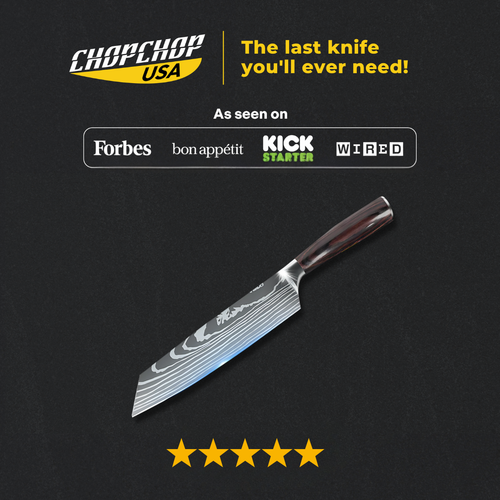A well-organized kitchen is more than just visually pleasing—it boosts your cooking efficiency and reduces the daily chaos of meal prep. One of the key areas often overlooked is how to organize kitchen utensils. Whether it’s spatulas crammed in a drawer or whisks getting tangled with tongs, disorganized tools waste time and space.
With the right system, you can keep everything neat, accessible, and easy to maintain. This guide covers not only how to organize kitchen utensils efficiently, but also offers creative solutions for small spaces, large collections, and every setup in between. Let's turn your kitchen into a well-oiled machine.
Top 5 Benefits of Organizing Kitchen Utensils

A well-organized kitchen is not just about having everything look neat—it can also make your cooking experience smoother, more enjoyable, and stress-free. Organizing your kitchen utensils is a simple yet highly effective way to improve efficiency and reduce chaos in the kitchen. Here are the top five benefits of organizing your kitchen utensils.
Increased Efficiency and Time Savings
One of the biggest advantages of organizing kitchen utensils is the boost in efficiency. When your utensils are neatly organized and easily accessible, you spend less time searching for the tools you need.
Whether you’re flipping pancakes, chopping vegetables, or mixing ingredients, having everything in its place allows you to move quickly through tasks. For example, storing your spatulas near the stove, your knives close to the cutting board, and your measuring spoons next to your prep area means you don’t have to waste valuable time digging through drawers or cabinets.
This simple organization reduces unnecessary movements and saves you precious minutes, especially during busy meal prep times.
Reduced Clutter and Stress
A cluttered kitchen can be overwhelming and stressful, especially when you're trying to prepare meals in a rush. By organizing your utensils, you eliminate the mess of items crammed into drawers or left out on counters.
When everything has a designated spot, it creates a sense of order, making the kitchen feel more spacious and less chaotic. This leads to a more relaxed cooking experience, where you can focus on the task at hand without getting distracted by disorganization.
A tidy kitchen is a more peaceful environment, helping to reduce stress, so cooking becomes an enjoyable activity rather than a stressful one.
Improved Safety
Organizing kitchen utensils isn't just about making things look neat—it’s also about making your kitchen safer. Sharp utensils, such as knives or vegetable peelers, should be stored properly to avoid accidents.
A cluttered drawer filled with tools can lead to items getting lost, creating a potential hazard when you’re rummaging through it. By using drawer dividers or dedicated containers, you ensure that each tool is safely stored, reducing the risk of accidents.
In addition, organizing utensils by type—keeping sharp objects separate from other tools—ensures that you can easily grab the right item without reaching blindly into a jumble of utensils.
Better Organization Leads to Easier Cleaning
An organized kitchen also makes cleaning up easier. When utensils are stored properly, it’s easier to wipe down counters and drawers because there’s less stuff in the way. Drawer organizers and utensil trays can prevent utensils from getting dirty by keeping them contained and upright.
In addition, it’s easier to spot crumbs or food debris that may have accumulated if your utensils are separated and visible. Regular maintenance of organized utensils also means that cleaning doesn’t become a daunting chore, but a quick and efficient task that can be done in minutes.
Plus, when things are in order, you’re more likely to put them back where they belong after each use, keeping everything cleaner overall.
Long-Term Durability and Maintenance
Properly organized utensils last longer. When you store kitchen tools properly, you reduce the wear and tear caused by jamming them into overcrowded drawers or leaving them exposed on counters.
For example, hanging utensils on hooks or storing them in containers protects the handles and keeps them in good condition. Additionally, regularly cleaning and maintaining your utensils is easier when they are organized.
The more care you put into keeping your utensils in good condition, the longer they’ll serve you in the kitchen. This means fewer replacements and less spending on new kitchen tools over time.
See more: 10 Safest Non-Toxic Kitchen Utensil Brands of 2025 Tested & Reviewed
How to Organize Kitchen Utensils

When it comes to how to organize kitchen utensils, the process doesn’t have to be complicated. With a few strategic steps, you can transform your drawers and counters into clutter-free zones that support your cooking habits.
Step 1: Clear Out Everything
Start by taking all your utensils out of drawers, crocks, and containers. Lay them out and sort them by category. Group similar items such as stirring tools, cutting tools, and baking utensils. This will help you identify duplicates, broken items, or tools you no longer use.
Step 2: Declutter and Decide What to Keep
Be honest about what you really use. If you haven’t touched a fondue fork in five years, it might be time to let it go. Donate or recycle what you don’t need. Keep only the essentials and your most-used items.
Step 3: Measure Your Drawers and Cabinets
Take accurate measurements of your storage areas. Knowing the width, depth, and height of your drawers and cabinets ensures you choose organizers that actually fit. Don’t skip this step—guessing can lead to wasted time and money when figuring out how to organize kitchen utensils.
Step 4: Add Liners
Drawer liners prevent your utensils from sliding around and also protect the surfaces from scratches and spills. Choose a non-slip material and cut it to fit the inside of each drawer.
Step 5: Choose the Right Organizers
Different utensils call for different organizing solutions:
- Drawer Dividers: These keep utensils neatly separated by type. Great for daily-use items.
- Modular Organizers: Adjustable trays fit various drawer sizes and allow flexibility as your needs change.
- Stackable Trays: Ideal for deep drawers, these let you store more without clutter.
These options help make the process of how to organize kitchen utensils much easier.
Step 6: Assign Zones
Think like a chef—place utensils close to where they’re used. Keep spatulas and spoons near the stove, baking tools near your mixer, and cutting tools near the prep area. This creates a more intuitive workflow when figuring out how to organize kitchen utensils.
Step 7: Label if Needed
If you share your kitchen with others, consider labeling each section. This makes it easy for everyone to put things back in their place, keeping your system intact.
Step 8: Maintain Regularly
Every month or so, take a quick inventory. Return stray utensils to their designated spots and reassess if anything new needs organizing. Staying on top of this prevents chaos from creeping back in when figuring out how to organize kitchen utensils.
With these steps, you’ll never have to dig through a messy drawer again. Knowing how to organize kitchen utensils saves time, reduces stress, and makes cooking more enjoyable.
15 Simple and Creative Ways to Store Utensils

Attach a Container to Cabinet Sides
Maximize vertical space by attaching a small container to the side of your cabinets. This solution keeps tools within easy reach while freeing up drawer space. Use metal bins, recycled tins, or plastic holders with adhesive backs or screw mounts.
It's a great place for spatulas, wooden spoons, or frequently used tongs. This idea is especially useful in smaller kitchens where every inch counts. Just make sure the container is sturdy and can support the weight of your utensils without falling off over time.
See more: Are Your Plastic Kitchen Utensils Toxic? New Study Reveals Hidden Risks
Use a Drawer Organizer Tray
One of the easiest ways to organize kitchen utensils is with a drawer organizer tray. These trays come with multiple compartments for separating utensils by type—think forks, knives, spatulas, and whisks. A flat layout makes everything visible and easy to grab.
Choose adjustable trays for a custom fit, and go for bamboo or plastic depending on your style and budget. Keep only your most-used items in the drawer and store less-used tools elsewhere. It’s a quick win for a cleaner, more efficient kitchen.
Hang Tools Inside Cabinet Doors
Cabinet doors are often wasted space. Install small adhesive hooks or racks on the inside to hang lightweight utensils like measuring spoons, peelers, or small tongs. This technique clears out drawer space while keeping tools easily accessible.
Make sure the cabinet still closes comfortably, and avoid hanging anything too bulky or heavy. This is a smart solution for rental kitchens or those lacking deep drawers. For a more permanent option, screw-in racks provide additional strength and stability.
Use a Curtain Rod to Hang Utensils
A mounted curtain rod can turn your kitchen wall into a stylish and functional utensil station. Use S-hooks to hang spatulas, whisks, ladles, and other essentials. You can install the rod above your stove, near the prep area, or even under a cabinet.
Choose a rod that matches your kitchen’s decor—brushed metal, matte black, or vintage bronze. This setup gives you easy access and helps you see everything at a glance. Plus, it frees up drawer and counter space.
Put Utensils in Wire Baskets
Wire baskets are versatile and add a rustic charm to your kitchen. Mount them on walls, the inside of cabinet doors, or place them on open shelves. Use them to store cooking utensils vertically or group small items like cookie cutters and measuring cups.
Label each basket for quick identification. The open design allows you to see what’s inside, making it easier to grab what you need without rummaging.
Add Hooks Under Cabinets
Make use of the space under your upper cabinets by installing small hooks. This area is perfect for hanging utensils like ladles, spatulas, and even mugs. Adhesive hooks are easy to install, while screw-in options are more permanent.
Hanging utensils this way keeps them out of drawers and within reach during cooking. Just be sure the utensils don’t hang too low, interfering with your countertop workspace.
Hang Utensils on a Pegboard
Pegboards aren’t just for garages! A pegboard wall or panel can be a customizable, eye-catching way to store utensils. Add hooks, baskets, or clips to organize everything from ladles to zesters.
You can paint the pegboard to match your kitchen or leave it natural for a minimalist look. As your collection changes, rearranging the setup is easy. This method works well in pantries or open wall spaces and keeps everything visible.
Use a Magnetic Strip
While magnetic strips are typically used for knives, they also work for metal utensils like whisks, peelers, and tongs. Mount a magnetic strip on a backsplash or cabinet side and keep your tools in plain sight.
This not only saves drawer space but also adds a modern, clean look to your kitchen. Be cautious about what you hang—only use items with enough metal surface to stay securely attached.
Store in Mason Jars Inside Drawers
Place Mason jars inside drawers to separate different utensils. This trick works especially well for long-handled tools like wooden spoons and spatulas. Use different sizes of jars to fit various items.
The jars prevent things from sliding around and make it easier to pull out one tool at a time. This idea combines rustic charm with practical functionality and can be customized easily.
Hang on the Side of Cabinets
Utilize the outside edge of your cabinet by adding a rail or hooks for utensils. This is especially handy for galley kitchens or tight corners. It keeps tools off the counter and out of drawers while remaining accessible. Use uniform hooks for a tidy appearance and hang items you use frequently. Be mindful of traffic flow—you don’t want utensils getting knocked off every time someone walks by.
Arrange Tools Diagonally in a Drawer
Standard organizers don’t always accommodate longer tools. Diagonal dividers help solve this problem. By storing your utensils at an angle, you maximize the drawer’s depth and avoid crowding.
Some organizers are already designed this way, or you can DIY your own with adjustable inserts. This method makes it easy to see everything at once and gives each item its own space.
Use a Crock on the Counter
A classic crock is perfect for storing your most-used cooking tools. Place it near your stove so you can grab what you need without opening a drawer. Choose one with a wide base so it won’t tip over. Ceramic, stainless steel, or decorative crocks can match your kitchen’s style. Just don’t overload it—only store what you use daily.
Hang from a Pot Rack
If you already use a pot rack, add some hooks for utensils too. This saves even more cabinet space and creates a cohesive hanging system. Keep heavier tools toward the center and lighter ones at the ends. A pot rack with built-in lighting can double as kitchen decor.
Make Compartments from Cereal Boxes
Recycle cereal boxes to make custom drawer compartments. Cut them to size, cover them with contact paper or fabric, and arrange them to fit your utensils. It’s a budget-friendly way to get the exact configuration you need. This is a great project for renters, students, or anyone who loves a good DIY hack.
Install Built-In Countertop Inserts
For a sleek, modern solution, install countertop inserts with designated slots for utensils. These built-ins are usually found in high-end kitchens but can be added with a little renovation. They keep counters clutter-free and offer instant access to cooking tools. Some even come with covers to hide utensils when not in use.
Maintaining an Organized Kitchen Utensil Collection

An organized kitchen utensil collection is essential for a functional and efficient cooking space. However, keeping it organized requires consistent effort. Here are some key tips to maintain a clutter-free utensil collection.
Regularly Declutter
Periodically go through your utensils and get rid of items you no longer use. Over time, you might accumulate duplicates or tools that have fallen out of use. Donate or recycle any utensils that are broken or rarely used to keep only the essentials.
Keep Utensils Clean and Dry
After each use, wash your utensils promptly and store them in their designated spots. A clean utensil is not only more hygienic but also easier to find. If you store your utensils in jars or containers, make sure they’re dry to prevent rust or mold from developing.
Reorganize as Needed
As your collection grows or changes, reassess your storage solutions. If your drawer dividers or countertop holders no longer fit your utensils, consider upgrading to a more efficient organizer. Keeping your storage system adaptable to your needs ensures continued organization.
Maintenance
Take care of your utensils by sharpening knives regularly and repairing or replacing worn-out items. This helps to extend the life of your collection and keeps everything in working order.
By following these simple practices, your kitchen utensil collection will stay organized, functional, and ready for any cooking task.
See more: Best Antibacterial Cutting Board for Your Kitchen 2025
Conclusion
Learning how to organize kitchen utensils isn’t just about aesthetics—it’s about function, efficiency, and making your kitchen a better place to cook. From simple drawer trays to creative DIY projects, there are endless ways to tailor your storage to your space and needs. Regular maintenance and a system that works for your habits are key to keeping things tidy. Whether you're dealing with a tiny apartment kitchen or a full chef's setup, these tips will help you stay organized for good.
For more amazing recipes, follow me on Facebook and Instagram! If you have any questions about ChopChop USA's products or promotions, please feel free to contact us at support@chopchopusa.com. Our dedicated team is available 24/7 and always happy to assist you.
FAQs
1. How to arrange utensils in the kitchen?
Group similar tools together and store them near the area where they’re used most.
2. How to properly store kitchen utensils?
Use drawer dividers, hooks, and jars to separate tools and prevent clutter.
3. How do you arrange your utensils?
Declutter first, measure your space, then use custom organizers for a perfect fit.




